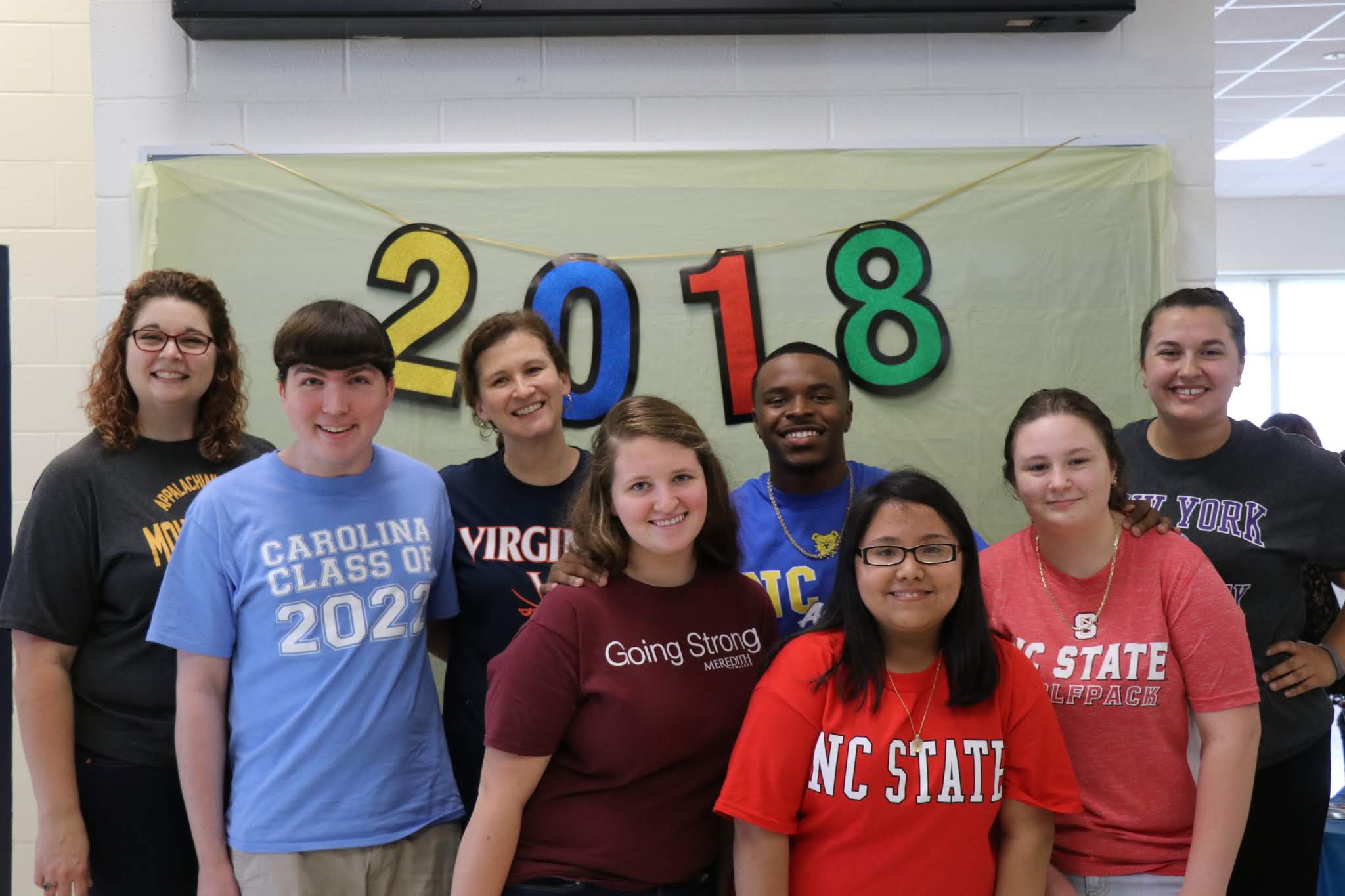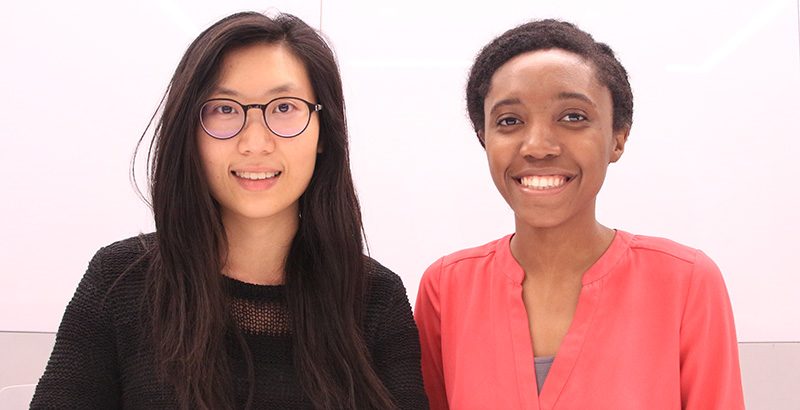With High School Counselors Badly Outnumbered, Innovative Nonprofit Steps In to Offer Smart College Advising to Low-Income Students Across the Country

This is an excerpt from the new Richard Whitmire book The B.A. Breakthrough: How Ending Diploma Disparities Can Change the Face of America. See more excerpts, profiles, commentaries, videos and additional data behind the book at The74Million.org/Breakthrough.
In May 2004, Nicole Hurd walked out of a meeting in Charlottesville, Virginia, reached her car in the nearby Taco Bell parking lot, and turned to her University of Virginia colleagues, informing them that she had just had an epiphany. Hurd recalls her colleagues looking at her like she was crazy. But with the benefit of hindsight, it really was an epiphany, one that changed her life and the lives of thousands of high school seniors attending schools that offer little in the way of college counseling.
The meeting Hurd attended was organized by the Jack Kent Cooke Foundation, named for the late owner of the Washington Redskins who directed much of his fortune into scholarships and other programs that target first-generation students, especially those high-achieving, low-income students who usually never find their way into the selective colleges where they are most likely to actually earn degrees. One of Hurd’s programs at the university was to offer help to students applying for foundation support, which was why she got invited to the meeting.
Across Virginia, the counselor-to-student ratio was 1 to 369. And in other parts of the country, it was even more dismal.
What she heard at that gathering surprised her. Across Virginia, the counselor-to-student ratio was 1 to 369. And in other parts of the country, it was even more dismal. “My jaw hit the ground. I knew it was bad, but there was something about that number that was really obtuse. And that’s not even the worst [ratio] in the country.” The next slide she saw showed that 79 percent of Virginians graduate from high school on schedule, but only 53 percent of those were going to college. “While I was aware of the gaps in opportunity for all students, there was something about the data I saw that day that my reaction was: ‘You have got to be kidding me!’”
All that led to the Taco Bell parking lot epiphany. Hurd had seen scores of UVA graduates head into Teach for America or the Peace Corps. Wouldn’t those same idealistic graduates sign up for a college counseling fellowship akin to TFA? That night she wrote an email to her boss at the university: What if we put our recent college graduates into low-income or under-resourced high schools across Virginia and got more students into higher education and, hopefully, complete it? Her boss’s response: Let’s do it.
When Hurd and her colleagues pitched the foundation for funding, they agreed and she received a $623,000 grant for a two-year pilot for what was then called the College Guide Program. Every national organization starts with small steps, and for Hurd’s new organization that step was a road trip. She boarded a bus with the 14 selected recent graduates, visiting all the colleges in the state where students are likely to apply. At first, there was some suspicion. When pulling up to rival Virginia Tech, for example, they ran across the sentiment: Wait, you’re from UVA and you expect us to believe that you’re going to steer promising students equally, not just to UVA? The data show they did just that, increasing applications to colleges across the commonwealth, many by double digits.
There were multiple reasons for the road trip. Not only did the admissions office get to know the new near-peer advisers (“Add us to your Rolodexes!”— an action that would come in handy in the coming years), but the team was able to get inside to ask the tough questions: What’s your college success rate, especially for low-income students, and more specifically, for low-income minority students? Colleges rarely go out of their way to make those figures publicly available, but in this instance, in very personal one-on-one meetings, there was no ducking. Those answers factored into the decisions the advisers and their students would make: If you are low-income and African-American, here are the odds you will earn a degree from this university.
The pilot proved itself worthy, and in 2007, with grants from the Jack Kent Cooke Foundation and the Lumina Foundation for Education, it went national with a new name, College Advising Corps. Now located at the University of North Carolina at Chapel Hill, as of 2018, the corps had more than 700 advisers in 15 states, working in 670 schools. From 2005 to 2016, it served more than 848,000 students in high schools across America.
The corps is not the only player out there trying to improve the quality of college advising. But its history is worth singling out because it’s a great example of how to get past the tipping point as a quick startup. Historically, college advising for these neglected students has been awful. Any intervention, such as the corps, brings swift results, in part because much of what it does qualifies as low-hanging fruit, such as paying attention to a college’s graduation rate. A pilot collaboration between KIPP San Antonio and San Antonio ISD produced immediate results: In just one year, having a KIPP counselor placed in one high school doubled the number of seniors at that school going to four-year colleges. Switching to data-driven college counseling, matching students to colleges where they are most likely to earn degrees, is the lowest of the low-hanging fruit.
There are many small entrepreneurs coming into this endeavor, such as the software tracking used by the Dell Scholars Program. The program’s mostly black or Hispanic students are 23 percent more likely than their peers to earn a bachelor’s degree in four years. Why? In addition to offering financial aid, the students get tracked for additional help they might need, both academic and personal. Do they need day care? Mental health support? Academic advising? “What sets us apart from a lot of other programs, particularly university-based programs, is we focus on what’s happening outside of school,” said Oscar Sweeten-Lopez, president of college success tools at the Michael & Susan Dell Foundation.
Students can get more information about the next phone they want to buy than they can details about where to spend the next two to four years of their life.
Coming up with new ways of guiding low-income students to and through college is getting a startup feel. Two Columbia University students just designed BestFit, which connects high school students with first-generation students already in college. That not only helps the high school students prepare for the challenges ahead, but also helps them pick the right college.

“Students can get more information about the next phone they want to buy than they can details about where to spend the next two to four years of their life,” said Asha Owens, one of the designers. Some programs are city-specific, such as the District of Columbia College Access Program, which pays special attention to the “summer melt” problem of recent high school graduates not showing up for their freshman year of college. Or the Bottom Line in Boston, which provides long-term personalized support for students, starting in their senior year of high school.
The College Board has long been a player in bettering the odds that first-generation students will succeed, including its Access to Opportunity program (much of The Achievable Dream, a book I co-authored, was about those College Board efforts). Probably the most intriguing, and promising, startup is Oakland, California-based Beyond12, which offers traditional school districts the kind of into-and-through college coaching and tracking that they have never done before.
Every college expert interviewed for this book pointed to improved college advising as the tool most likely to jump-start the college success rates for first-generation students. Forcing universities with poor graduation rates to improve appears to be a task worthy of Sisyphus. But offering students data-driven counseling that allows them to avoid those bad actors? That’s doable. The new startups are joining the veterans, such as the Education Trust, which is adept at boosting college success rates for low-income students. The trust’s College Results Online offers bare-knuckle advice to students, parents, and counselors on which colleges to pursue — and which to avoid.
And then there are some really major new players. In spring 2018, former New York City mayor Michael Bloomberg announced a $375 million education gift that targets college success rates. Smart money knows where to lay down bets. Said Bloomberg: “As important as college-readiness is, we have to make sure that students who are ready actually attend schools that match their abilities. Think about this: Less than half of one percent of students from the poorest 20 percent of families attends a selective college — even though many have the grades to get in. Or consider this: Only six percent of kids at top colleges come from the poorest families. And over 50 percent of qualified lower-income students don’t even apply.”
Bloomberg’s gift will support the American Talent Initiative and also expand CollegePoint, which offers college guidance to students attending high schools where that’s lacking. “Through counseling over the phone, texting, video chat and email, we help them through the application process and work to make sure that they apply to and enroll in the kinds of schools that they have earned the right to attend,” said Bloomberg at the announcement. “Already, 40,000 students have participated in CollegePoint. Our goal is for more than half of high-achieving, lower-income students nationally to enroll in top colleges by 2020.”
Being passionate about your mistakes
From what I observed, what’s playing out with these different groups resembles what I saw while reporting The Founders. Although there are multiple efforts at improving college counseling — what the charter networks have learned, what College Advising Corps has done, what CollegePoint offers — they don’t seem to be stepping on toes, at least for now. What’s striking is the amount of strategy-sharing taking place. All the nonprofits have taken the time to observe KIPP Through College, for example, and they have tapped into the best of that program. They all embrace the work of Caroline Hoxby of Stanford University and Sarah Turner of the University of Virginia, the researchers who first exposed the dilemma of low-income, high-performing students who never got a shot at colleges that reflect their abilities. The Hoxby/Turner solutions, first laid out in 2013, get cited like the Bible. Not a single person from this group — from top KIPP officials to Turner, the UVA researcher — believes there’s a single bullet to solve the problem. It’s a package, with some action steps more achievable than others, as I lay out in the conclusion.
And they continue to learn from their early mistakes, and from the mistakes made in the corrections that followed. When I challenged Hurd, of the College Advising Corps, to come up with examples of important course corrections, she didn’t hesitate. Rarely do you find someone so passionate about laying out missteps. Her top three:
Lesson 1: All magic is local.
It’s always tempting for a growing endeavor to be a top-down organization, she said. But it doesn’t work that way. Performance indicators invented at headquarters play out differently in the group, depending on the city and state. “Magic doesn’t happen in the national office in Chapel Hill. Here, we can find trends, figure out the best practices, but the magic is local. I learned you can’t go top down. You have to let this percolate up from the advisers, from the schools, from the school partners. We’ve learned that lesson multiple times.”
Lesson 2: It’s the parents.
College counselors may think they play the deciding role in determining where students end up in college. Or teachers. Or school friends. But the biggest influencers, for better or worse, are parents. “That may sound obvious, but it took us 10 years to figure this out. We’re not helping students; we’re helping families.” Years of surveying and data crunching always lead back to the same conclusion: Students themselves cite their parents as having the most influence, even students whose parents never went to college. And that can be a challenge.
“The biggest misunderstanding parents have is about affordability.”
—Nicole Hurd, founder, College Advising Corps
Based on my reporting in The Alumni, Hurd is spot-on, especially in Hispanic communities where families are very tight and jump at opportunities to see their children live at home and commute to college. And for those students brought to the U.S. as children and protected under the now-uncertain Deferred Action for Childhood Arrivals program, going beyond their hometown is especially daunting. It means their parents are unlikely to ever come visit, even on graduation day. That’s a tough one for both students and parents to accept.
“The reality is that parents are still influencing their children about college, even if they didn’t go themselves, which might explain why we see some resistance or hesitancy. If mom and dad didn’t go, they’re probably deferring to what they’re reading in the newspaper, what they’re hearing from their friends, what their co-worker’s child did. You know, they’re getting incomplete advice, so how could they be giving great advice to their child?”
The biggest misunderstanding parents have is about affordability. “They say to their child, ‘Don’t go, we can’t afford it. We need you to work.’” What’s missing is the broader look at return on investment. “When talking about higher education, we use consumer language rather than investment language. We talk about debt, we talk about how expensive it is, but we don’t talk about return on investment” and we need to, she said.
Another thing to keep in mind with these parents, said Hurd, is that communicating means shifting to texting. “I think the charters have had the same experience. If mom and dad are working two or three shifts, or they don’t feel comfortable coming to school, or they are undocumented, you have to figure out a way to get information to them where they feel safe, where they feel supported.” That can mean going to churches and libraries. But it definitely calls for texting. “It’s amazing the penetration of mobile phones in low-income communities. It’s sky high.”
Lesson 3: Injecting more technology into college advising and tracking is important, but not enough.
Recent technology advances in this field are remarkable, such as the software programs designed by Matt Niksch at the Noble Network of Charter Schools. My favorite new program: Students get to peek not just at which colleges are most likely to accept them and which are most likely to ensure they graduate, but also whether a certain major at the school is likely to pay off in the long run, especially if there’s projected student debt. And the beta form of college tracking software is just getting field testing. That means a software program keeps track of all the key steps, such as renewing financial aid forms and signing up for next-semester classes, and sends constant text messages.
All good, said Hurd, but still not enough. “I’m not sure technology will ever get us to the finish line. It will get us close, but not through. There’s too much emotion involved. For a first-generation student afraid of leaving home and what that means in terms of your connections to family — that’s never going to be answered by an online tutorial. It all comes down to the student hearing four words: I believe in you.
There’s a human-capital piece to this, and we are continuing to explore how to address the challenge of scaling human interaction and technology at the same time.”
The corps’ methodical, trial-and-error approach to college advising, essentially turning it into a science, invites scientific evaluation, which has taken place several times. Allow me to state a brief bottom line from the research: Although it is premature to assess by college completion data, the indicator that matters most, it appears to be working with admittance (between a 3 and 7 percentage point jump, depending on school size, says Stanford University researcher Eric Bettinger, who evaluates the program). It’s a promising beginning.
This is an excerpt from the new Richard Whitmire book The B.A. Breakthrough: How Ending Diploma Disparities Can Change the Face of America. See more excerpts, profiles, commentaries, videos and additional data behind the book at The74Million.org/Breakthrough.
Disclosure: The Walton Family Foundation funded a writing fellowship that helped produce The B.A. Breakthrough and provides financial support to The 74. The 74’s CEO, Stephen Cockrell, served as director of external impact for the KIPP Foundation from 2015 to 2019. He played no part in the reporting or editing of this story.
Get stories like these delivered straight to your inbox. Sign up for The 74 Newsletter

;)
